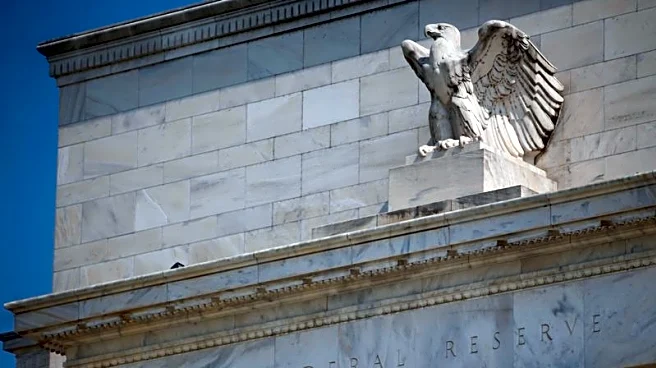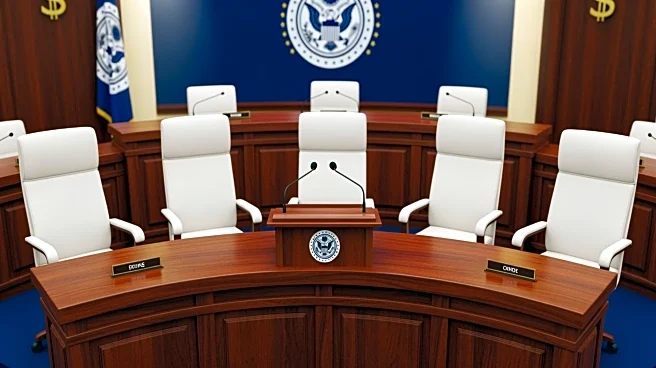What's Happening?
A significant trade in the U.S. rates market suggests anticipation of the Federal Reserve's announcement to end its quantitative tightening (QT) program. This trade involved 40,000 contracts, indicating a bet that the Secured Overnight Financing Rate
(SOFR) will average less than nine basis points above the federal funds rate in November. Analysts believe this trade's rate sensitivity is equivalent to holding $2-$3 billion in 10-year Treasuries. The expectation is that the Fed will announce the conclusion of QT at its upcoming policy meeting, potentially leading to lower repo rates as liquidity conditions improve.
Why It's Important?
The end of the Fed's balance sheet reduction could have significant implications for the U.S. financial markets. By halting QT, the Fed may increase liquidity, potentially lowering borrowing costs and repo rates. This move could stabilize short-term funding markets, which have experienced tight conditions. Investors and financial institutions may benefit from improved liquidity, while the broader economy could see reduced pressure on interest rates. However, the shift may also impact Treasury yields and influence investment strategies across various sectors.
What's Next?
The Federal Reserve's policy meeting is expected to provide clarity on the future of QT and interest rates. If QT ends, the Fed may reinvest maturing securities, increasing reserves and liquidity in the system. This could lead to lower repo rates and influence the broader interest rate environment. Stakeholders, including banks and investors, will closely monitor the Fed's actions and any subsequent changes in market conditions. The Fed's decision could also prompt adjustments in fiscal policy and government debt issuance strategies.
Beyond the Headlines
The potential end of QT raises questions about the Fed's long-term strategy for managing its balance sheet and interest rates. The decision may reflect broader concerns about liquidity and financial stability, highlighting the delicate balance the Fed must maintain between supporting economic growth and controlling inflation. Additionally, the move could influence global financial markets, as changes in U.S. monetary policy often have international repercussions.














